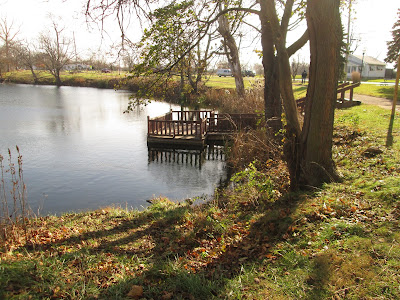Facing the other direction, the view was just as uninspiring (although I have totally come to appreciate the concept of flat places in which to walk).
To be fair, this particular section of the railroad line immortalized in the old song runs through the middle of town and is next to a popular city park, home to a playground, athletic fields, and a quite pleasant walking path along the edge of an old quarry,
but must the trail edges be mowed quite so close? As we all know, turfgrass is pretty much a biological desert.
Fortunately, most of the section I walked has been allowed to grow up, providing relatively decent habitat along the edges of farm fields, light industrial intallations, and residential subdivisions.
The adjacent subdivision, taking advantage of what would certainly be a selling point for me, has created a quite nice access point for residents and others to enjoy the trail.
And then, just as I was about to get all warm and fuzzy about good neighborhood design, I discovered that every single lawn strip in the development has been planted with--you guessed it--Bradford pear, one of the worst landscape trees ever developed. And here, on the edge of the Oak Openings, one of the Nature Conservancy's Last Great Places and home to fabulous grasslands, the developers chose to plant a traffic island with Miscanthus sinensis, the horrifyingly invasive Chinese feather grass.
Grrr.



















